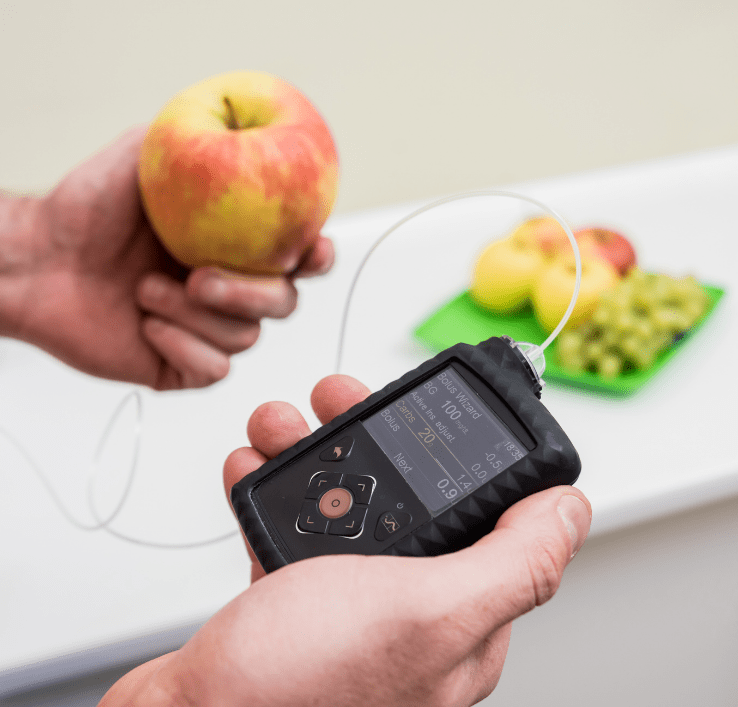Type 1 diabetes - day-to-day management
Insulin pump
Home / Type 1 diabetes / Types of insulin and use / Insulin pump
How does an
insulin pump work?
Before treatment with an insulin pump is initiated, a child or an adult diagnosed with Type 1 Diabetes will first receive insulin injections. Once the treating physician determines that the parents (and/or child, depending on age) have sufficiently understood the disease and are ready to transfer to the pump, the physician will help them learn more about the different models available. After they have assessed the pros and the cons of each model, they are ready to make an informed decision.
Insulin pumps require a catheter to be installed under the child’s skin to provide continuous sub-cutaneous insulin administration.
Some models have tubing that connects the catheter to the pump. Equivalent in size to a numeric pager, the pump can be worn on the child’s belt and is equipped with an insulin reservoir as well as programming buttons.
On other models, the catheter and insulin reservoir (the size of the pinkie finger) are placed directly on the child’s skin, with independent remote programming that can be located a few meters from the child.
All models are based on the same principle: the pump is programmed for the child and sends a basic quantity of insulin (basal), which represents a few units of insulin per hour on an ongoing basis. When the child eats, he or she must indicate to the pump the quantity of carbohydrates that he or she has eaten as well as the blood glucose. The pump will then calculate the additional dose above the “basal” and inject what is referred to as “bolus”. Different programs can be adjusted in case of intense physical activity or if the child is sick. To determine the appropriate algorithms and ratios for each child, it is crucial to test blood glucose several times per day (and night), especially at the beginning of treatment or in case of lifestyle changes (first days at school, adolescence, new job, etc.).

The pump is programmed for the child
Some pumps offer the hybrid closed-loop insulin delivery system. These pumps can deliver insulin more automatically when linked to a continuous blood glucose meter.
These can raise or lower the basal as well as give corrections when the blood sugar is not within the intended target. The user can benefit from a better time in the target with this type of system, without however having to make additional manual interventions on the pump.



